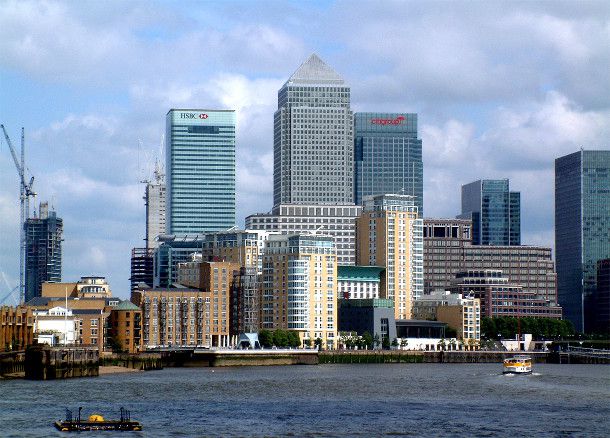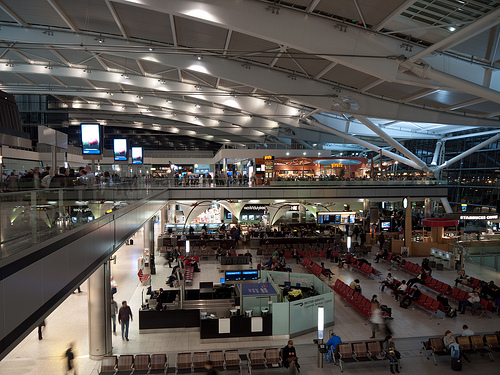
Although London and New York may appear to have little in common at first glance, the centuries old city is making many improvements and changes to stay competitive in a global society. The London of today, like much of Europe, is striving to push past the financial troubles of recent years and move towards a thriving future among the world’s top economies. This push toward the future has especially taken off in the past couple of years, starting with the summer Olympics of 2012.With a similar population size – both New York and London have hit the 8 million mark -the two cities are easily comparable when it comes to the core industries of transportation, tourism, technology, and economic development. Both New York and London place these industries as high priority by dedicating substantial press, time, effort, and funding toward them year after year. Thus far, the two cities have each rolled out plans for growth in these areas – clearly very aware of the impact these industries have in their respective economies.
Transportation and Tourism: “The Olympic Impact”
London’s strategy for improvement and expansion begins at Heathrow airport – for most visitors, the first experience they have on English soil. England’s most popular airport is around 50-60 minutes from central London and its five terminals have undergone a lot of changes recently thanks to the 2012 Olympic preparations. 11 billion pounds (almost 17 billion dollars) of modifications, and updates have taken place at the airport, with much of the change being focused on Terminal 2. Opening in June 2014, Heathrow’s Terminal 2 will feature a sleek design and a highly modern aesthetic the goal of which is to take away the sense of being in an airport entirely. It aims to surpass the airport’s own Terminal 5, which, with its mall-like environment and ample entertainment opportunities, was rated as the best airport terminal in the world in 2011 and 2012 by SkyTrax..The key elements of the London development plan are expansion and investment. While New York matches on economic investment, it seems to fall behind when it comes to transport investment and expansion. Any visitor, international or domestic who comes to NYC via Newark and JFK airports will notice that not much has changed, at least outwardly, in years. With tourism being such a big industry – wages supported by NYC tourism hit 18.6 billion in 2011 – it seems that following London’s lead is in New York City’s best interest. Transport renovation should move towards a top priority in order to capitalize on an industry that benefits the city so significantly.
11 billion pounds (almost 17 billion dollars) of modifications, and updates have taken place at the airport, with much of the change being focused on Terminal 2. Opening in June 2014, Heathrow’s Terminal 2 will feature a sleek design and a highly modern aesthetic the goal of which is to take away the sense of being in an airport entirely. It aims to surpass the airport’s own Terminal 5, which, with its mall-like environment and ample entertainment opportunities, was rated as the best airport terminal in the world in 2011 and 2012 by SkyTrax..The key elements of the London development plan are expansion and investment. While New York matches on economic investment, it seems to fall behind when it comes to transport investment and expansion. Any visitor, international or domestic who comes to NYC via Newark and JFK airports will notice that not much has changed, at least outwardly, in years. With tourism being such a big industry – wages supported by NYC tourism hit 18.6 billion in 2011 – it seems that following London’s lead is in New York City’s best interest. Transport renovation should move towards a top priority in order to capitalize on an industry that benefits the city so significantly.
Technological Development
To many American tourists, London is exactly what they expected it to be: clean, presentable, and formal, maybe even stuffy; but there is a vibrant and growing tech community within the city. A bit east of central London you’ll find the city’s answer to Silicon Valley: the “Silicon Roundabout” at the junction of Old Street and City Road. It was only a matter of time before London sought to model its technology and development industry hub after Silicon Valley (NYC made the same move back in the mid-1990’s with Silicon Alley). The Roundabout has caught the startup bug, and it’s aggressively gaining momentum, success, and confidence – starting with a 77 million dollar investment by the UK government to regenerate the actual, currently unattractive roundabout itself.In the past, it was the British who left England to work in Silicon Valley, but today, we see the opposite more and more. Songkick, a large live music event website, is one of the original Silicon Roundabout startups, and six members of their 30-member team are from the United States. A survey put out by The Guardian in 2011 found that of the startup scene in east London, over 50 entrepreneurs were Americans who originated in Silicon Valley.The country’s “Behind the Screen” initiative has begun investing in the younger generation’s tech skills. It is a trial of a new program that will cover computational principles, systemic thinking, software development and logic at the GCSE and A-levels (high school). Some partners for the program include: Microsoft, Google, IBM, the BBC, and Procter & Gamble.Technology is an area where New York City has thankfully upped its game as well. NY airports may be lagging behind London’s Heathrow, but similar to London’s “Behind the Screen” initiative, New York City created the “Software Engineering Pilot” program which will open in 20 NYC schools September 2013. The goal of the curriculum is to train the students for the high-tech job market they will face in the future, and aims to include up to 3,500 students by 2016. The program will be modeled after the Academy for Software Engineering in Manhattan (opened last September) and includes courses in digital fabrication, 3-D printing, and mobile computing.
Financial Development
In addition to technology, London has also been building out and expanding its financial and business centers. Canary Wharf is one of London’s two main financial centers, the other being the traditional City of London. The Canary Wharf Group, an integrated property development and investment group has built 35 buildings in the Wharf – with plans for 13 more by 2017 – which house the world headquarters of several global banks and media organizations. There is a hustle and bustle here that isn’t usually found so far east of central London, especially being just a river hop away from the wide-open space and greenery of Greenwich Park. It is clear that England no longer solely relies on central London to drive the business and economy of England. Canary Wharf, an area that came from shaky and bankrupt beginnings in the early 1990’s, has found it’s feet, and they’re planted on solid ground.Similar to Central London and Canary Wharf, New York is no longer only dependent on Wall Street for economic growth and financing, especially in regard to the city’s unemployment rate, which decreased from 10.4% to 8.8% in 2012 in thanks to private financing and public tech infrastructure.The Manhattan Borough President filed a report in December of 2012 that outlined the city’s strategy to expand its “entrepreneurial ecosystem” to working class citizens, women, and minorities who previously did not have easy access to new business opportunities. The report focuses on preparing the city for the needs of the tech industry by eliminating the talent shortage through educational programs, streamlining the current bureaucratic inefficiencies that new business often face (red tape), the creation of a municipal fiber network in order to increase internet connectivity around the city, and a move to embrace crowdsourcing and micro-zoning so as to continually encourage New York City’s entrepreneurs.The city’s goal for this plan extends beyond Silicon Alley, the report boasts that its new dedicated will also be in the service of businesses that offer indirect jobs – such as: accounting firms, marketing agencies, and a large variety of freelancers.
Learning From Each Other
New York City and London are taking similar approaches toward prosperous futures regarding the same core industries. London may be out front regarding transportation – their recent investments toward Heathrow airport are extensive, and time will tell if the payoff is a tourism bump such as the city enjoyed during the Olympics.Although London has also begun to invest in its Silicon Roundabout, it has yet to surpass NYC’s foresight regarding Silicon Alley. A large lump sum into the aesthetics of the Roundabout is one thing, but New York is looking at the long game. When it comes to investing in technology development New York is focusing on smaller, specific areas for improvement, which means starting from the beginning with internet connectivity and a reduction of bureaucratic red tape.

